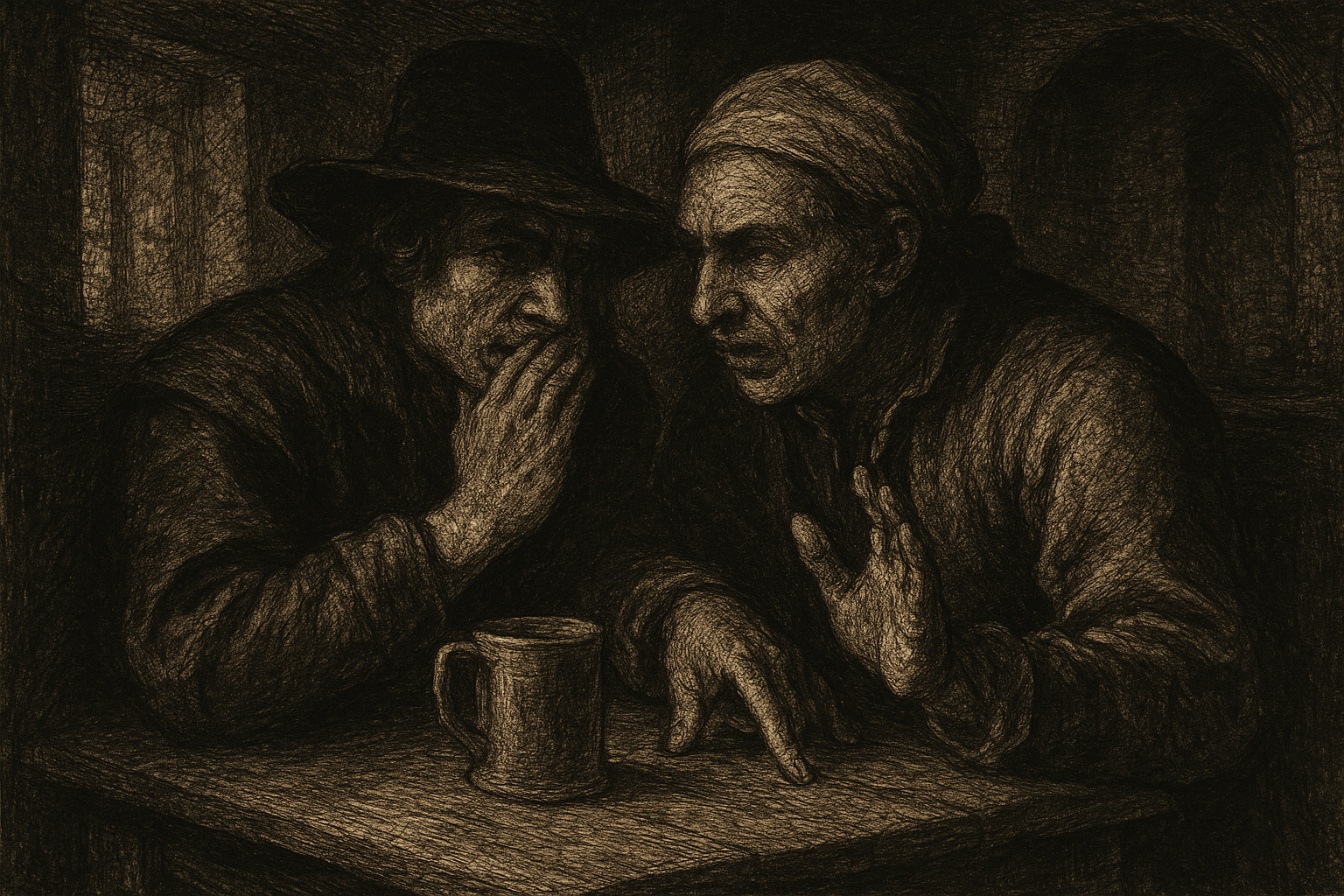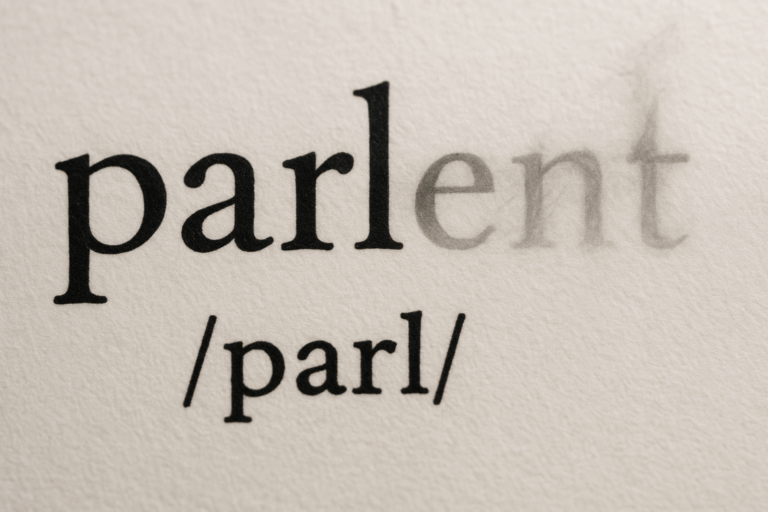Imagine walking the grimy, bustling streets of 16th-century London. The air is thick with the smell of coal smoke and roasted meat, the sounds a cacophony of vendors hawking wares, horses clattering on cobblestones, and the endless murmur of human conversation. But listen closer. In the shadowed corners of a tavern or a crowded marketplace, you might overhear a strange dialect, a rapid-fire exchange where familiar English words are twisted into new shapes and peppered with terms that are utterly alien. You’ve just stumbled upon Thieves’ Cant, the secret language—or argot—of the English underworld.
More than just slang, Cant was a meticulously crafted tool for survival. It was a linguistic fortress, built to conceal criminal activity from the ears of constables and clueless citizens, while simultaneously forging a powerful bond among those who lived outside the law. This is the story of how a secret language became the lifeblood of a subculture.
The Birth of a Secret Tongue
Thieves’ Cant, also known as Pedlar’s French or St Giles’ Greek, emerged from the social turmoil of Tudor England. As the feudal system crumbled, land enclosures pushed thousands of rural families off their ancestral lands. These displaced people poured into cities like London, creating a large, impoverished, and transient population. Faced with brutal vagrancy laws—where simply being unemployed and homeless could lead to whipping, branding, or hanging—many turned to petty crime to survive.
From this desperate milieu, a criminal subculture was born. To operate effectively, its members needed a way to communicate in plain sight. Our most significant window into this world comes from a remarkable 1566 book by a magistrate named Thomas Harman, titled A Caveat for Common Cursitors, Vulgarly Called Vagabonds. Harman, determined to expose the “lewd life of these wretches,” interviewed and documented the vagrants he encountered, painstakingly compiling a dictionary of their secret language. He saw it as a tool of deception, writing:
“As concerning their language, which they call pedlars’ French or canting, it is a speech compact thirty years since of English, and a great number of odd words of their own devising, without all order or reason: and for no other purpose, but to hide their villainy from others.”
While Harman saw only chaos, he was documenting the birth of a sophisticated linguistic system designed for a very specific purpose.
More Than Slang: The Power of an Anti-Language
To truly understand Thieves’ Cant, we need to see it as what linguists, particularly M.A.K. Halliday, would later term an “anti-language.” An anti-language is the tongue of an “anti-society”—a subculture that exists in opposition to the dominant, mainstream culture. Its primary functions are both defensive and identity-forming.
First and foremost, Cant was about exclusion. It allowed thieves, beggars, and con artists to discuss plans, identify targets, and warn of danger right under the noses of their potential victims or the authorities. A “constable” or “beadle” wasn’t called by his proper title; he was a Harman beck, named after the very magistrate trying to expose them. A “house” was a ken, and a “public house” or tavern was a boozing-ken. This re-lexicalization—the act of replacing standard vocabulary—creates an instant barrier. If you don’t know the words, you are an outsider and a potential threat.
Second, it fostered inclusion and identity. Speaking Cant was a badge of honor, a sign that you belonged to this hidden world. It separated the seasoned criminal from the novice, and the entire underworld from the world of “squares” or “culls”—the respectable, gullible citizens they preyed upon. This shared vocabulary built a powerful sense of community and solidarity among a group that was otherwise ostracized and persecuted by society.
A Glimpse into the Canting Lexicon
The vocabulary of Thieves’ Cant is a colorful, gritty tapestry woven from altered English, borrowings from other languages like Romani, and pure invention. The words are often pragmatic, descriptive, and darkly humorous.
Here’s a small sample of its vocabulary:
- Cove: A man or a fellow. (e.g., “The cove is a prig.”)
- Prig: To steal, or a thief. (As in a “horse-prigger.”)
- Ken: A house. (A gentry-ken was a nobleman’s house—a prime target.)
- Stow your whids: Be quiet, hold your tongue.
- Glim: Fire or a light. (To “douse the glim” meant to put out the candle.)
- Glib: The tongue, or speech itself. (“He has a fine glib” meant he was a smooth talker.)
- Grunt: Money, specifically a crown coin. (Similar to how we might say “bucks” or “quid.”)
- Cheat: A thing. The gallows was morbidly called the “cheating-tree.”
- Ruffian: The Devil.
- Mort: A woman. (An autem-mort was a “married” vagabond woman.)
*Nix: Nothing. (A word that has survived into modern slang.)
Using these terms, a simple criminal plan could be laid out with perfect clarity to an insider, yet sound like gibberish to anyone else. “That gentry-cove has plenty of grunt in his ken. We’ll wait for him to douse the glim, then go in and prig it.” The message is clear, coded, and secure.
The Echoes of Cant
While the specific vocabulary recorded by Thomas Harman faded over the centuries, the principle of Thieves’ Cant never died. It evolved, merging with other underworld argots and slangs. By the 19th century, the slang of London’s criminal classes, as famously depicted in Charles Dickens’ Oliver Twist, was a new iteration of the same phenomenon. When the Artful Dodger welcomes Oliver to Fagin’s den, he is speaking a direct linguistic descendant of the 16th-century Cant.
The legacy of Cant continues today in prison slang, gang dialects, and the specialized jargons of criminal groups worldwide. In every case, the language serves the same dual purpose: to conceal meaning from outsiders and to reinforce the identity of the group. It is a testament to the fundamental human need for community, even when that community is defined by its opposition to society at large.
Thieves’ Cant is more than a historical curiosity or a list of quirky old words. It is a powerful example of how language adapts under pressure, becoming a shield, a sword, and a secret handshake all at once. It reminds us that beneath the surface of official, “proper” language, there have always been other voices, whispering their own truths in a tongue designed not to be understood.











